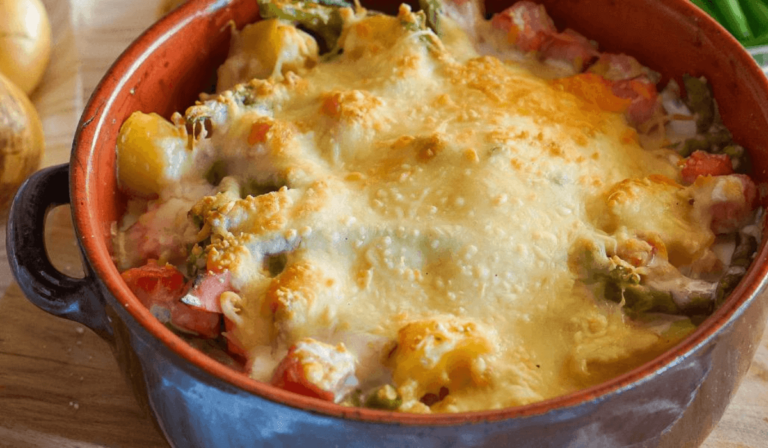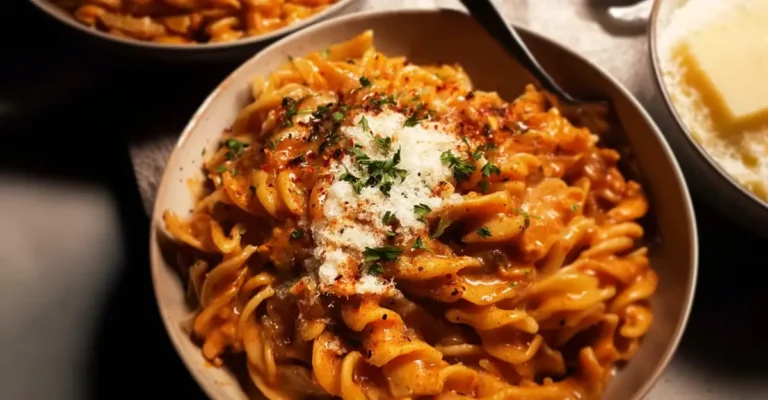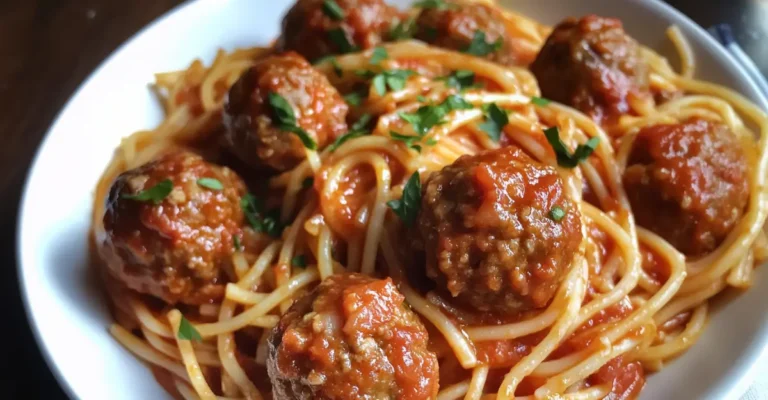Part 1: Introduction Chicken Alfredo Pasta
Introduction to Chicken Alfredo Pasta
Ah, Chicken Alfredo Pasta! This dish is the epitome of comfort food, blending rich, creamy sauce with tender chicken and perfectly cooked pasta. But where did this delicious dish originate? Alfredo sauce has its roots in early 20th-century Rome, created by chef Alfredo di Lelio. The simple yet luxurious combination of butter, Parmesan cheese, and cream quickly became popular and spread globally..
Nowadays, Chicken Alfredo Pasta is a beloved classic in both American and Italian cuisines. It’s easy to see why—it’s creamy, cheesy, and oh-so-satisfying. Whether you’re cooking for a family dinner or impressing guests, this dish never fails to please. So, let’s dive into what makes this dish so irresistible and how you can make it perfectly every time.
In the next sections, we’ll break down everything from choosing the best ingredients to mastering the perfect Alfredo sauce. Get ready to take your pasta game to the next level!
Part 2: Ingredients and Preparation Chicken Alfredo Pasta
Ingredients for Chicken Alfredo Pasta
To whip up an unforgettable Chicken Alfredo Pasta, you’ll need a few essential ingredients. Here’s a detailed list to get you started:
- For the Chicken:
- 2 tbsp olive oil
- 1 lb (500g) chicken breasts
- 1 tbsp Italian seasoning
- 1 tsp garlic powder
- Salt and pepper to taste
- For the Alfredo Sauce:
- 3 tbsp butter
- 2 garlic cloves, minced
- 2 cups heavy cream (or Greek yogurt for a lighter version)
- 1½ cups freshly grated Parmesan cheese
- 1 tsp Italian seasoning
- Salt and pepper to taste
- For the Pasta:
- 1 lb (500g) fettuccine
- Freshly chopped parsley for garnish
- Extra Parmesan for serving
Isn’t that straightforward? These ingredients come together to create a dish that’s rich, creamy, and bursting with flavor.
Preparation of Chicken
First things first, let’s prep that chicken to perfection. The key to tender, juicy chicken is in the seasoning and cooking technique.
- Season the Chicken:
- Pat the chicken breasts dry with paper towels.
- Rub them with olive oil and sprinkle with Italian seasoning, garlic powder, salt, and pepper.
- Cooking the Chicken:
- Heat a skillet over medium-high heat and add a bit of olive oil.
- Cook the chicken breasts for about 5-7 minutes on each side until golden brown and cooked through.
- Remove the chicken from the skillet and let it rest for a few minutes before slicing.
Why rest the chicken? This allows the juices to redistribute, keeping the meat moist and flavorful.
Cooking the Pasta
While the chicken is resting, it’s time to cook the pasta.
- Boil the Pasta:
- Bring a large pot of salted water to a boil.
- Add the fettuccine and cook according to the package instructions until al dente (usually 9-12 minutes).
- Reserve about ½ cup of the pasta water before draining.
Why save pasta water? It’s a secret weapon for adjusting the sauce’s consistency later on.
Now, you’ve got your perfectly cooked chicken and pasta ready. In the next section, we’ll dive into making the creamy Alfredo sauce that ties everything together.
Part 3: Making the Alfredo Sauce
Classic Alfredo Sauce Recipe
Now, let’s move on to the heart of Chicken Alfredo Pasta: the Alfredo sauce. This creamy delight is what makes the dish so luxurious. Follow these steps to make it from scratch:
- Melt the Butter:
- In the same skillet used for the chicken, melt 3 tablespoons of butter over medium heat. This allows the sauce to pick up the delicious chicken bits left in the pan, adding depth to the flavor.
- Cook the Garlic:
- Add 2 minced garlic cloves to the melted butter. Cook for about 1 minute, just until the garlic becomes fragrant. Be careful not to burn it!
- Add the Cream:
- Pour in 2 cups of heavy cream. Stir well and bring to a gentle simmer. Don’t let it boil, as this can cause the cream to separate.
- Incorporate the Cheese:
- Gradually whisk in 1½ cups of freshly grated Parmesan cheese. Continue stirring until the cheese is fully melted and the sauce is smooth.
- Seasoning:
- Add 1 teaspoon of Italian seasoning, and salt and pepper to taste. Adjust the seasoning as needed.
Healthier and Alternative Versions Chicken Alfredo Pasta
If you’re looking to lighten things up, there are several alternatives to the traditional heavy cream and butter-based sauce.
- Greek Yogurt Version:
- Substitute heavy cream with Greek yogurt. Use the same amount, and add a splash of milk to achieve the desired consistency. This variation still offers a creamy texture but with fewer calories and more protein.
- Milk and Flour Version:
- Use a combination of milk and a thickening agent like flour. Start by melting the butter, then whisk in 2 tablespoons of all-purpose flour to create a roux. Slowly add 2 cups of milk, stirring continuously to avoid lumps. Once the mixture thickens, proceed with the rest of the recipe.
These variations maintain the creamy essence of Alfredo sauce while making it a bit healthier.
Part 4: Cooking the Pasta
Choosing the Right Pasta
When it comes to Chicken Alfredo Pasta, not all pasta types are created equal. The best choices are those that hold the sauce well.
- Fettuccine:
- The traditional choice, fettuccine’s wide, flat shape makes it perfect for soaking up the creamy Alfredo sauce.
- Pappardelle:
- For a gourmet twist, use pappardelle. Its broad ribbons capture more sauce, providing a luxurious mouthfeel.
- Penne:
- If you prefer a bite-sized option, penne is great. Its ridges and hollow center trap the sauce beautifully.
Combining the Pasta and Sauce
Now that both the pasta and sauce are ready, it’s time to bring them together.
- Mixing the Pasta:
- Add the cooked and drained pasta to the skillet with the Alfredo sauce. Toss well to ensure every strand is coated with the creamy goodness.
- Adjusting Consistency:
- If the sauce is too thick, add some of the reserved pasta water a little at a time until you reach the desired consistency.
- Adding the Chicken:
- Slice the cooked chicken breasts and add them to the skillet. Toss gently to combine.
This step is crucial for ensuring that your Chicken Alfredo Pasta is perfectly creamy and evenly coated.
Part 5: Serving Suggestions
Plating and Garnishing
Once your Chicken Alfredo Pasta is cooked to perfection, it’s time to make it look as good as it tastes. Presentation matters, and with a few simple tips, you can serve a restaurant-quality dish right at home.
- Plating Tips:
- Use a large, shallow bowl for serving. This helps the pasta stay warm longer and gives you space to arrange it beautifully.
- Twirl the fettuccine with tongs to create a neat nest of pasta in the center of the plate.
- Arrange slices of chicken on top of the pasta, fanning them out slightly for visual appeal.
- Garnishing:
- Sprinkle freshly chopped parsley over the top. It adds a pop of color and a hint of freshness.
- Add extra grated Parmesan cheese for that irresistible cheesy finish.
- For a touch of elegance, grind some fresh black pepper over the dish just before serving.
Side Dishes and Pairings
What goes well with Chicken Alfredo Pasta? Because this dish is so rich and creamy, you’ll want to balance it with lighter sides and complementary flavors.
- Garlic Bread:
- A classic pairing, garlic bread is perfect for soaking up any leftover Alfredo sauce. Try making it with a crispy baguette brushed with garlic butter and toasted to golden perfection.
- Salads:
- A light, crisp salad can cut through the richness of the Alfredo. Consider a simple green salad with a lemon vinaigrette, or a Caesar salad for a more robust flavor.
- Roasted Vegetables:
- Roasted broccoli, asparagus, or cherry tomatoes add a nutritious and colorful contrast to the creamy pasta. Simply toss them with olive oil, salt, and pepper, then roast until tender and slightly caramelized.
- Wine Pairings:
- A glass of Chardonnay or Pinot Grigio complements the creamy sauce beautifully. If you prefer red wine, go for a light-bodied option like Pinot Noir.
These sides and pairings not only enhance the meal but also create a balanced dining experience.
Part 6: Common Mistakes and Troubleshooting Chicken Alfredo Pasta
Avoiding Common Mistakes Chicken Alfredo Pasta
Even with a straightforward recipe, there are common pitfalls that can trip up any cook. Here’s how to avoid them and ensure your Chicken Alfredo Pasta turns out perfect every time.
- Preventing Grainy Sauce:
- Grainy Alfredo sauce is usually the result of cheese added at too high a temperature. To avoid this, make sure to reduce the heat before adding the cheese and stir continuously until smooth.
- Ensuring Creamy Consistency:
- If the sauce is too thick, it can feel heavy and clumpy. Use reserved pasta water to thin it out gradually, maintaining a silky texture.
- Avoiding Overcooked Chicken:
- Overcooked chicken can be dry and tough. Cook the chicken until just done and let it rest before slicing. This keeps the meat juicy and tender.
Troubleshooting Tips
Sometimes things don’t go as planned. Here are quick fixes for common issues.
- Sauce Too Thin:
- If your sauce isn’t thick enough, let it simmer a bit longer to reduce and thicken. You can also add a bit more Parmesan cheese to help it along.
- Sauce Too Thick:
- Thin a thick sauce by adding a splash of pasta water or milk. Stir until you reach the desired consistency.
- Bland Flavor:
- If the sauce tastes flat, adjust the seasoning. Sometimes a pinch of salt or an extra dash of garlic powder can make all the difference. Freshly ground black pepper also adds a nice kick.
With these tips, you’ll be able to troubleshoot and perfect your Chicken Alfredo Pasta every time.
Part 7: Nutritional Information and Health Tips
Nutritional Breakdown Chicken Alfredo Pasta
Understanding the nutritional content of your Chicken Alfredo Pasta can help you enjoy this indulgent dish without the guilt. Here’s a typical breakdown:
- Calories: Approximately 920 kcal per serving
- Carbohydrates: 45g
- Protein: 40g
- Fat: 65g (with 37g saturated fat)
- Cholesterol: 280mg
- Sodium: 1179mg
- Potassium: 540mg
- Fiber: 2g
- Sugar: 2g
- Vitamin A: 2054 IU
- Calcium: 462mg
- Iron: 2mg
These values can vary based on the exact ingredients and portions used, but this gives a good general idea.
Health Tips
To make your Chicken Alfredo Pasta a bit healthier without sacrificing flavor, consider these tips:
- Reduce the Fat:
- Substitute heavy cream with half-and-half or whole milk to cut down on fat and calories. Using Greek yogurt is another excellent option, providing a creamy texture with added protein.
- Increase Fiber:
- Use whole grain or vegetable-based pasta. These options are higher in fiber, which can help with digestion and keep you feeling fuller longer.
- Add Vegetables:
- Incorporate veggies like broccoli, spinach, or peas into the dish. They add nutrients and color, making the meal more balanced and visually appealing.
- Lean Protein:
- Use lean chicken breast and consider grilling or baking instead of frying. This reduces the fat content while still delivering delicious, juicy chicken.
- Portion Control:
- Serve smaller portions and pair the pasta with a large salad or a vegetable side. This helps manage calorie intake without missing out on the creamy Alfredo experience.
Making these small adjustments can significantly impact the nutritional profile of your Chicken Alfredo Pasta, making it a more health-conscious choice.
Part 8: Frequently Asked Questions (FAQs)
What can you substitute for Parmesan cheese in Alfredo sauce?
You can substitute Parmesan with other hard cheeses like Pecorino Romano, Grana Padano, or Asiago. Each offers a unique flavor twist to the classic Alfredo sauce.
How can you make Alfredo sauce thicker?
To thicken Alfredo sauce, you can add more freshly grated Parmesan cheese. Make sure to add it off the heat to prevent the sauce from becoming grainy. Another option is to let the sauce simmer gently to reduce and thicken naturally.
What are some good side dishes for Chicken Alfredo Pasta?
Great side dishes include garlic bread, Caesar salad, or roasted vegetables like broccoli or asparagus. These sides complement the rich and creamy pasta, balancing the meal.
Can you make Alfredo sauce without cream?
Yes, you can use milk and a thickening agent like flour or cornstarch. Start with a roux (butter and flour) and slowly whisk in milk. This creates a lighter version of the sauce while maintaining its creamy texture.
These FAQs address common concerns and provide practical solutions, enhancing the reader’s confidence in making and serving Chicken Alfredo Pasta.
Part 9: Conclusion Chicken Alfredo Pasta
Summary and Final Tips
To wrap things up, Chicken Alfredo Pasta is a versatile, comforting dish that can be enjoyed in various ways. From selecting the right ingredients to perfecting the Alfredo sauce and choosing complementary sides, every step contributes to a delicious meal. Don’t be afraid to experiment with healthier versions and add your personal touch to this classic recipe.
Whether you’re preparing a quick weeknight dinner or a special occasion meal, following these tips and techniques will ensure your Chicken Alfredo Pasta is always a hit.
Part 10: External Links and Resources
External Links
For further reading and more detailed recipes, check out these valuable resources:
- History of Alfredo Sauce – Food Network
- Best Pasta Types for Alfredo – The Kitchn
- Healthier Alfredo Sauce Options – Allrecipes






